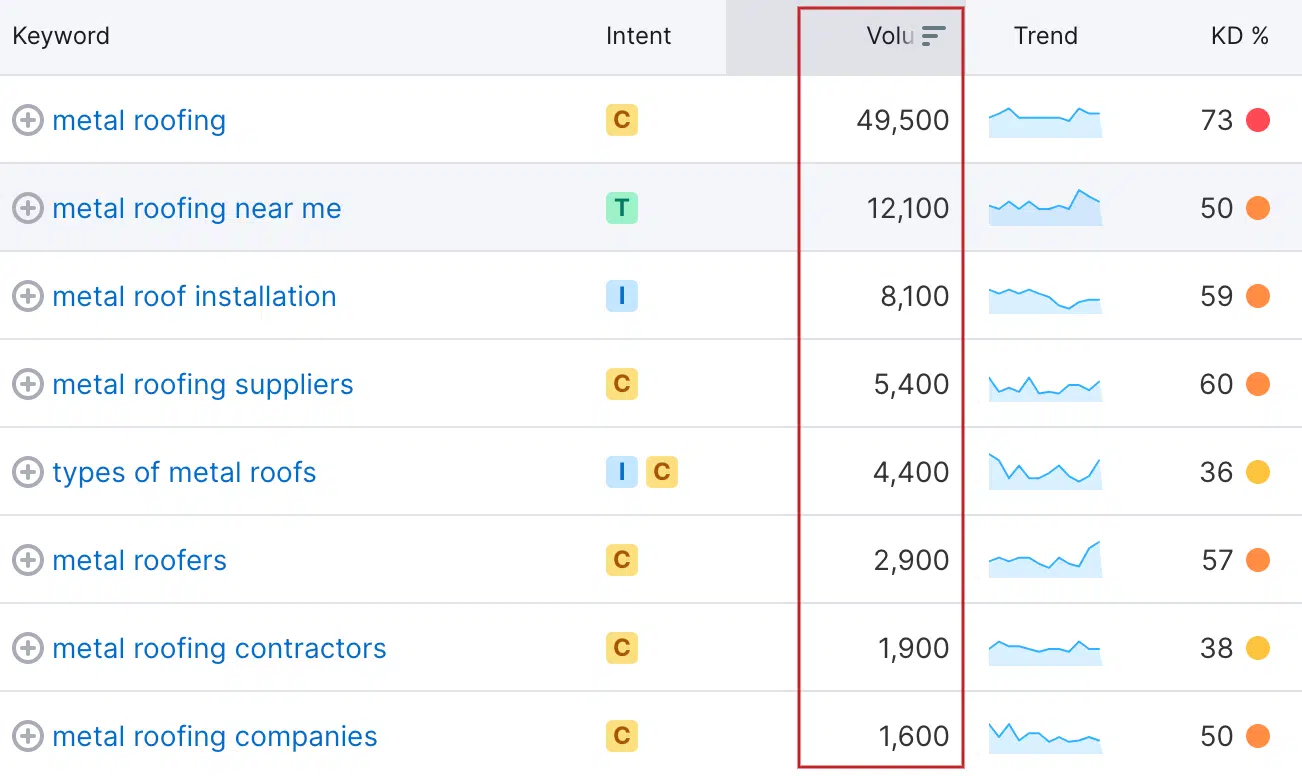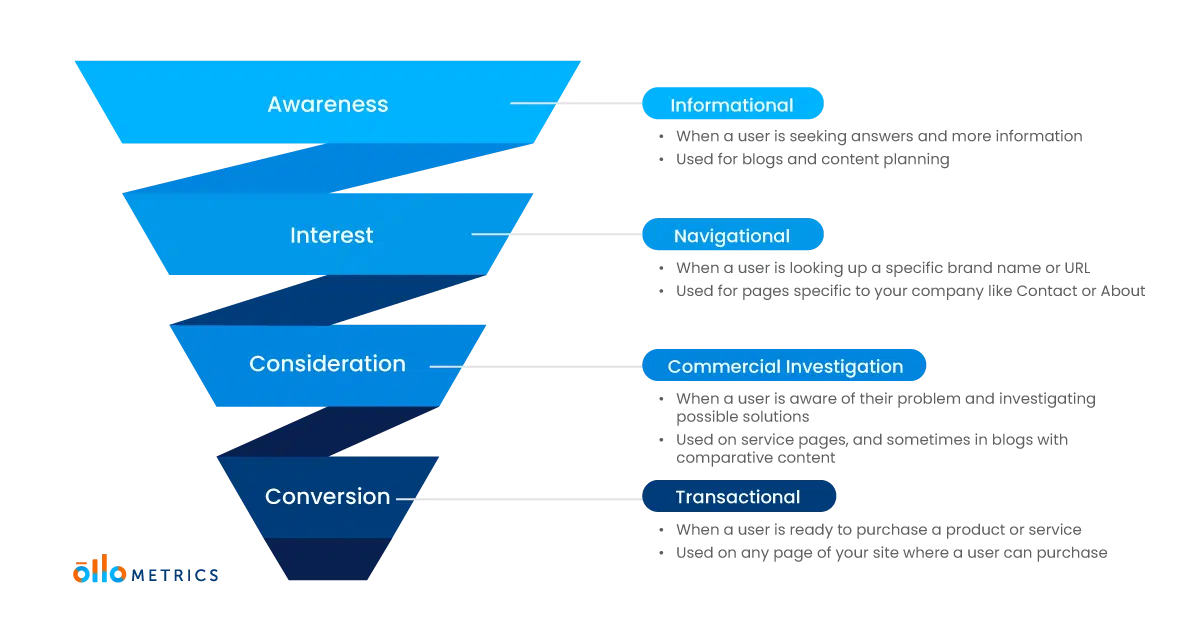The keyword research strategy trilogy: volume, difficulty, and intent

[ad_1]
Marketing research It’s an ever-changing industry, but even amid the generative AI movement, one thing remains constant: keywords.
Deciding which keywords are most valuable to your company can make or break your online exposure and presence, and it also puts distance between you and your competitors. But only when harnessed appropriately.
Learn to do strategy Keyword search to Search Engine Optimization It allows you to navigate the chaos and noise of search marketing, leading you to a treasure trove of targeted traffic, higher rankings, and increased conversions.
However, keyword research goes beyond just finding common words or phrases. It involves understanding the trifecta of scale, difficulty and intent.
- Volume tells you how often people search for specific keywords.
- It is difficult to measure the competition you will face.
- Intent reveals the underlying purpose of a user’s searches.
Explaining how to use these three data points will help you create a crystal-clear keyword strategy for your company.
Understanding keyword volume
Keyword size It represents the number of times a keyword is searched over a certain time frame, providing valuable insights into user behavior and search trends and indicating the potential traffic and visibility a particular keyword could bring to your website.
High volume keywords can be a goldmine, attracting tons of organic traffic and leads.
On the other hand, low-volume keywords may face less competition (we’ll talk about that next), allowing you to carve out a niche and target a specific audience.
Finding high-volume keywords that are relevant to your business is the ultimate goal of keyword research.
You want to uncover those hidden gems with high search volume that matches your products, services, or industry.
To find these elements, start by brainstorming relevant terms and phrases that your target audience might use when searching for solutions or information related to your business.
Put yourself in your target customer’s shoes and think about the language they will use.
Then, use keyword research tools to explore the search volume for those keywords and identify keywords with significant search traffic.
For example, if you are a roofing company that offers different types and styles of roofs, but want to attract more traffic and awareness of your metal roofing option, you may want to explore some variations of key phrases your customers might search to find the most commonly used terms.
Here are a few to consider:

Here you can see the average number of times each keyword is searched per month amount Column to evaluate the keyword you might want to follow through with your metal roofing service page.
But remember, it’s not just about unconsciously chasing high-volume keywords. You also need to consider the relevancy and competition associated with these keywords.
Finding a balance between high volume and achievable competition is the key to success.
Evaluate keyword difficulty
Keyword difficulty Measures the difficulty of ranking for a specific keyword. We turn to our trusted tools to evaluate keyword difficulty and calculate the factors affecting it.
We’re talking about things like how many websites are already ranking for the keyword, the quality and authority of those websites, SERP features, etc.
A good keyword research strategy is to strike a balance in finding that sweet spot between high volume keywords and low difficulty keywords.
You want to target keywords that have decent search volume but aren’t overtaken by aggressive competitors. It’s about choosing your battles wisely and focusing on keywords where you have a fighting chance.
Choose a keyword difficulty that is no more than 10-15% points above your current domain authority (a metric you can measure in the all-in-one search marketing platforms mentioned above). This will give you a fighting chance to rank with the right content.
Following the example of the metal roofing company, if your domain authority score is 30, you will need to target keywords with a difficulty score between 20-40.
Your site should rank very quickly for keywords with difficulty below 30. Anything higher than that will pose a bit more of a challenge for those top three spots in search results, but ranking higher for these terms will also help grow your domain authority over time .
Given those same keywords, I would say that “metal roofing types” and “metal roofing contractors” could be ranked for with our current domain authority.

SEO is a long game. It is about finding that delicate balance and adapting your strategy.
Start with a viable strategy now, and as you build your domain authority, you can seek more competitive terms in time.
matching user intent
User intent Indicates the primary purpose or motive behind the search query. This is where the scientific field of SEO turns into an art form that is open to interpretation.
Keyword intent is all about deciphering the hidden meaning behind someone’s words.
Users who type their queries into search engines have a specific goal in mind. maybe you can be:
- search for information.
- Navigate to a specific website.
- finding a solution.
- Complete the deal.
- and more.
User intent is commonly divided into four different types. Let’s break it down:
Media intent
This happens when users are looking for knowledge, answers or solutions to their questions.
They may be looking for “how” guidestutorials or informational articles. Interview their research with a Blog or Long document Informational landing page on your website.
navigational intent
Users with navigational intent already have a specific website or brand in mind. They want to go directly to this site.
They may search for the brand name or specific URLs. Satisfy their search with your company information such as on or Website page.
commercial intent
These users are in the survey stage and are more likely to consider a purchase. They are looking for product comparisons, reviews, or pricing information.
For example, “best bookkeeping software” or “best running shoes”.
Meet their search with a long form Service pageOr an improved user experience homepage, or a great blog post about the “best products,” depending on your business.
transaction intent
Users with transactional intent are willing to take action. They want to make a purchase, sign up for a service, or complete a transaction.
They may search for keywords such as “buy”, “order”, or “register”. Match their search with a product or service page with an appropriate CTA.
Dig deeper: How to create and implement a buyer journey based content strategy

You will like it Search engine results analysis To align keyword targeting with user intent. Learn what types of content rank for specific keywords.
Look at the top-ranking pages and ask yourself: “Does my content align with what users expect to find?”
It is about positioning your target audience and providing them with the answers and solutions they are looking for.
Going back to the metal roofing example, if it was between “Types of Metal Roofing” or “Metal Roofing Contractor,” we would choose “Metal Roofing Contractor” based on the intent of the business user.

The intent of Metal Surface Types shows potential commercial intent.
However, after looking at the ranking of other content for this keyword, we will quickly determine that this is a keyword for another blog or piece of content.
By understanding user intent and creating content that addresses it, you can improve the user experience and increase the chances of conversions and customer satisfaction.
Dig deeper: There are more than 4 types of search intent
Trilogy in Action: Best Practices
With some background in making good keyword strategy decisions, here are some best practices to start your research.
Conduct comprehensive keyword research
You are not limited to a few keywords. Cast a wide net from scratch to explore different keywords to ensure you get all the hidden gems instead of just the obvious terms.
Use keyword research tools, brainstorming sessions with co-workers and clients, and competitor analysis to collect a variety of potential keywords.
Keyword prioritization based on the trifecta
Not all keywords are created equal. You need to prioritize based on the triple factors.
Select keywords with decent search volume that align with your business goals and have a realistic difficulty level.
Also, consider different forms of words (for example, past or present tense) as you explore keywords that have meaning for your company and audience.
Create content that addresses user intent
Develop content that meets the needs and intentions of your target audience. Whether it’s informative blog posts, engaging videos, or interactive guides, customize your content to match user intent.
Not sure what language your customers are using or what questions they are asking?
Talk to your sales and customer service teams to see if they have a list of common objections or frequently asked questions. This is a great place to create a content plan that focuses on keywords and keywords.
After you’ve identified your most valuable keywords, the last thing you want to do is target them to the wrong piece of content.
Don’t use that high volume informational keyword and optimize your product page to get more purchases. These users are just looking for more knowledge and are not ready to buy.
Meeting the user’s intent with appropriate pieces of content satisfies the customer and rewards your website’s authority with positive ranking signals.
Dig deeper: Mapping content: who, what, where, when, why and how
Monitor and adjust your keyword strategy
SEO is constantly evolving. Monitor the performance of your keywords and be prepared to make adjustments as needed.
Market language can change over time as trends ebb and flow. Analyze data, track rankings, and listen to what your audience is saying.
Keep your landing pages and content fresh with the most important target keywords, but feel free to adjust those keywords as your audience grows.
Remember to remain flexible and adapt your keyword strategy as needed.
Keep experimenting, testing, and improving your approach to stay ahead of the latest search trends and ahead of your competition.
Where to get your keyword data
You can choose a combination of free and paid tools for data point collection that we discussed above. Here are some options:
Google Keyword Planner
This free tool allows you to explore keyword ideas, analyze search volumes, and even get an insight into the competitiveness of specific keywords.
Uber suggestion
This “freemium” tool allows you to perform a few data searches per month before needing a paid account. It’s a great all-in-one introductory tool if you’re just starting out.
Research marketing platforms
Some of the comprehensive paid tools like Semrush, Ahrefs, and Moz provide all the data you need and some nifty tools for digging deeper when you’re tinkering with keyword strategy, giving you a comprehensive understanding of the search landscape.
Consider volume, difficulty, and intent for a strong keyword strategy
Keyword research is not a one-time endeavor. It is a constant journey of growth and improvement.
Keyword research is not going out of style any time soon. Even generative AI needs to use commonly used language and search terms.
So if you’re just starting to discover the surface or you’re ready to dig a little deeper into keyword research and SEO, you’re on the right track. Just keep going.
Let your curiosity be your compass, your creativity your fuel, and your commitment your guiding light.
Soon, your expertly chosen targeted keywords will help you connect with your audience, increase your online presence, and drive more conversions for your business.
The opinions expressed in this article are those of the guest author and not necessarily Search Engine Land. Staff authors are listed here.
[ad_2]
Source link




